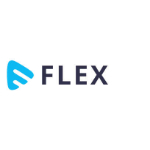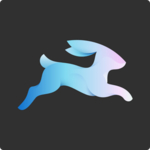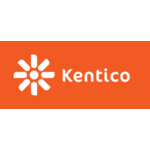List of Best Headless Content Management System
Showing 10 of 18 productsContentful is a and versatile content management system that streamlines the process of creating, managing, and delivering digital content across multiple platforms. Designed for modern businesses and developers, Contentful provides a hassle-free sol...Read Contentful Reviews
Strapi is a is a content management system designed to streamline your website development process. With user-friendly interfaces and customizable features, Strapi allows you to easily create and manage content, making it the perfect solution for bus...Read Strapi Reviews
Muvi Flex is a powerful software that allows you to effortlessly provide your audience with exceptional video experiences. By incorporating Muvi Flexs top-notch capabilities, you can easily enhance your content and front-end website...Read Muvi Flex Reviews
Webnexs Headless is a software that has transformed the traditional approach to eCommerce. This state-of-the-art platform offers advanced features and endless customization options, making it a game-changer for businesses of all sizes. With its seaml...Read Webnexs Headless Reviews
Directus is the top choice for businesses seeking a streamlined content management system. With its innovative features and user-friendly interface, Directus revolutionizes the way organizations manage and distribute their digital content. Say goodby...Read Directus Reviews
Picturepark is a digital asset management solution designed to help businesses efficiently store, organize, and share their digital files. With its user-friendly interface features, Picturepark streamlines the process of managing digital assets, allo...Read Picturepark Reviews
Zesty.io is a powerful, all-in-one content management system designed to make website creation and maintenance effortless. With its user-friendly interface and robust features, Zesty.io empowers businesses to create and manage their online presence w...Read Zesty.io Reviews
Agility CMS is a dynamic content management system designed to streamline your teams workflow and deliver exceptional digital experiences. With its intuitive interface and robust features, Agility CMS empowers businesses of all sizes to easily manage...Read Agility CMS Reviews
GraphCMS - your all-in-one solution for managing, creating, and delivering dynamic content across multiple platforms. With its intuitive interface and powerful features, GraphCMS takes content management to a whole new level. Say goodbye to complex c...Read GraphCMS Reviews
Kentico CMS is a content management system that empowers businesses and organizations to easily create, manage, and optimize their online presence. With its intuitive user interface and robust features, Kentico CMS helps streamline website management...Read Kentico CMS Reviews
- What Is Headless Content Management System?
- Top Reasons Why Businesses Need Headless Content Management System?
- What Are the Top Key Features of Headless Content Management System?
- What Are the Top Benefits of Headless Content Management System?
- What Are the Steps to Choose the Right Headless Content Management System?
- What Are the Types of Headless Content Management System for Different Industries?
- What Are the Technology Trends for Best Headless Content Management System?
- what are the deployment options for headless content management system?
What Is Headless Content Management System?
A headless content management system (CMS) refers to a specific form of content management system that segregates the storage of data from the presentation layer, commonly known as the "head," within a system.
In contrast to conventional content management systems such as WordPress or Drupal, a headless content management system is designed to store data in a database without being responsible for the presentation of material in a user's web browser.
Conversely, the information is transmitted through application programming interfaces (APIs) to the application that interacts directly with the client. The concept of headless content management is to enable developers to separate the content from its visual presentation.
In more precise terminology, the best headless CMS generally consists solely of a backend service or application programming interface (API) that enables developers to save, retrieve, and modify material.
The Application Programming Interface (API) facilitates the management of content within the Content Management System and afterward enables its dissemination through various channels, including online, mobile, and third-party applications. These channels collectively constitute the "presentation layers."
In summary, a top headless content management system enables developers to effectively oversee and distribute material across many platforms without the need to consider its visual presentation. This feature renders it well-suited for endeavors that involve the dissemination of material across many platforms and applications.
Top Reasons Why Businesses Need Headless Content Management System?
1. Increased Flexibility: The utilization of a headless content management system (CMS) significantly simplifies the facilitation of cohesive content experiences across various channels and devices.
2. Automation and Scalability: The utilization of a Headless CMS offers enhanced regulation of guidelines and automation in the processes of generating, adapting, and distributing information.
3. Faster Time to Market: The decoupled architecture of a Headless CMS facilitates speedier development cycles.
4. Easier Customization: The utilization of a top headless content management system (CMS) facilitates the process of tailoring the system to align with individualized company requirements.
5. Improved User Experience: The utilization of the best headless content management system empowers the customization of content dissemination to individual users, taking into account their specific preferences.
6. Seamless Integration: A headless content management system (CMS) possesses the capability to seamlessly interface with a wide range of applications, eliminating the need for intricate development processes.
7. Advanced Security: The utilization of the best headless CMS offers robust security measures aimed at safeguarding vital content.
8. Superior Performance: The implementation of this system facilitates the efficient delivery of material and significantly decreases the duration it takes for web pages to load.
9. Cost-Effectiveness: The utilization of a decoupled architecture renders it a highly effective approach for data and content management.
10. Superior Assets Management: The utilization of a Headless Content Management System (CMS) facilitates enhanced organization and management of digital content.
11. Improved Data Management: The utilization of headless content management facilitates the efficient aggregation, curation, and structuring of intricate data by enterprises.
12. Personalization: The utilization of a Headless Material Management System (CMS) facilitates the implementation of targeting functionalities, enabling the delivery of customized material to individual users.
13. Content Varieties: The concept of being headless refers to the state of lacking a head or being without a Content Management System (CMS) that possesses the capability to effectively handle diverse forms of content, including but not limited to video, audio, and photos.
14. Cross-Platform Delivery: The utilization of the best headless content management systems empowers organizations to effectively distribute appropriate content across various devices.
15. Automated Workflows: The use of a Headless CMS facilitates the management of recurring tasks within businesses, namely those related to content generation, modification, and dissemination.
What Are the Top Key Features of Headless Content Management System?
A headless content management system (CMS) refers to a server-side platform that enables users to generate, save, and administer digital material without a predefined front-end presentation layer.
The primary distinguishing characteristics of a top headless content management system:
1. API-First Architecture: The Headless CMS offers an architecture that prioritizes the API, enabling developers to retrieve material in a format that suits their preferences.
2. Backend Agnostic: Headless content management systems (CMSs) exhibit backend agnosticism. This feature enables seamless integration with many platforms, hence enhancing scalability.
3. Dynamic, Flexible Content: The best headless content management system offers the capability to manage content in a dynamic and flexible manner, allowing for easy modification and updating as required. The aforementioned solution obviates the necessity for intricate information technology infrastructure.
4. Web & Mobile Compatible: Headless content management provides support for both online and mobile devices, facilitating the creation of applications that can be deployed across many platforms.
5. CMS Independence: This system offers the advantage of CMS independence, providing developers the flexibility to select from a diverse range of content management systems for the deployment of their applications.
6. Content Delivery Networking: It enables the implementation of content delivery networking (CDN), hence enhancing the speed and efficiency of content distribution.
7. Modular Component Design: These systems frequently have a modular component architecture, hence facilitating the customization and deployment of web applications.
8. Version Control: Headless content management systems (CMSs) facilitate the implementation of version control mechanisms, enabling developers to effectively monitor and manage numerous iterations of their material.
9. Collaborative Environment: It facilitates a collaborative milieu wherein several users can actively engage in real-time to collaboratively produce content.
10. Multi-Language Support: The best headless CMS offers the capability to support many languages, enabling developers to generate material in various languages and cater to diverse audiences.
What Are the Top Benefits of Headless Content Management System?
1. Cost Efficiency: Headless CMS does not require additional resources to maintain a front-end, allowing businesses to focus their efforts and resources on developing content and strategies that will benefit their overall goals.
2. Scalability: The best headless CMS can easily expand to meet any additional needs a business may develop over time. This makes it ideal for businesses that are growing and need more resources to maintain their content efficiently.
3. Flexibility: Headless CMS solutions offer businesses the flexibility to choose which technologies they want to use for their front end. This allows businesses to customize their content delivery based on their individual needs and preferences.
4. User Experience: Headless content management is designed to provide a streamlined user experience that is consistent and engaging across multiple platforms. This allows businesses to provide a better customer experience, which allows them to acquire and retain more customers.
5. Security: Headless CMSs offer superior security through robust user authentication and authorization protocols, encryption, and other data protection measures. This ensures sensitive customer and business data is kept safe and secure.
6. Content Reuse: Headless CMS solutions make it easier to reuse and repurpose content across multiple channels. This allows businesses to save time and resources, while still providing content that is relevant and engaging.
What Are the Steps to Choose the Right Headless Content Management System?
1. Understand your business needs: Before picking a headless CMS, it is imperative to identify the current or projected requirements of your business.
This analysis involves identifying the types of content that will require management and delivery, determining the frequency of content updates, identifying the contributors and target audience, and considering both present and future integration requirements.
2. Take a look at the features: This analysis aims to compare the various characteristics of different headless Content Management Systems (CMSs) now available in the market. These aspects include the system's flexibility in generating content in diverse formats such as text, graphics, and forms.
Additionally, the evaluation encompasses the presence of A/B testing capabilities, multi-site support, preview mode throughout the editing process, integration options, scalability, and other relevant factors.
3. Check the security features: It is imperative to prioritize the consideration of security features such as authentication, encryption, two-factor authentication, password management, and data protection.
4. Analyze the pricing: Examine and contrast the cost structures of top headless content management systems that align with your specific criteria. Certain providers provide several pricing models, including pay-per-plan, transactional plans, in-app purchases, and subscription-based plans.
5. Test the CMS: Conduct a trial of the headless CMS software by utilizing a test website in order to assess its essential functionalities, analyze its document organization, and comprehend its underlying framework.
6. Take feedback: Take feedback from the community users, and analyze case studies of organizations that have implemented the CMS in question. This will provide valuable insights into the effectiveness and suitability of the CMS for your specific needs.
What Are the Types of Headless Content Management System for Different Industries?
The selection of headless content management systems (CMS) for various industries is contingent upon factors such as the nature of the content, the organizational size, and the extent of content generation and delivery.
Nevertheless, it is worth noting that there are several prevalent categories of best headless content management systems that cater to diverse businesses.
1. Blogging Platforms: In general, blogging platforms function as user-friendly content management systems (CMS) that facilitate the creation and dissemination of blogs, narratives, and various forms of material.
2. The eCommerce Platforms: Content Management System (CMS) is a specialized platform designed to facilitate the creation and management of content for eCommerce websites, with the primary objective of streamlining the operations involved in running online businesses.
3. Digital Publishing Platforms: Digital publishing systems enable users to generate information in a structured and easily searchable format, facilitating the dissemination of said content.
4. Social Media Platforms: Social media platforms such as Twitter and Facebook offer users a range of tools to effectively manage and distribute material inside their respective networks.
5. Content Management Systems (CMS): A content management system (CMS) is a software platform designed to facilitate the processes of content production, organization, and dissemination.
This particular content management system (CMS) possesses the capability to generate and oversee various forms of content, ranging from modest blogs to extensive multi-department initiatives. The selection of a headless content management system is contingent upon the nature of the content and the extent of the undertaking.
In general, it is advisable to employ a content management system (CMS) that is tailored to the particular sector and project requirements.
What Are the Technology Trends for Best Headless Content Management System?
The technology developments pertaining to headless content management systems (CMS) exhibit variability contingent upon the unique requirements of the user.
However, certain prominent patterns have emerged as widely favored among users:
1. The implementation of API-based and distributed architectures. An increasing number of enterprises are using an API-based architecture as an alternative to conventional backend databases. This approach enables the storage of content items in a manner that is decoupled from the front end presentation layer.
Furthermore, the adoption of distributed systems is increasing due to their inherent benefits in terms of scalability.
2. The process of separating the front-end presentation layer. In order to enhance flexibility in terms of presentation layer technologies and framework choices, numerous firms are opting to decouple the standard content management system (CMS) from its built-in presentation layer.
3. The process of incorporating additional systems. The integration of the best headless content management systems with existing company systems, such as customer relationship management or e-commerce systems, is recommended. This feature enables the utilization of your material across several platforms without the need for redundant efforts.
4. The automation of processes refers to the implementation of technology and systems to replace or streamline manual tasks and operations.
The implementation of automation in various processes, including content distribution, publishing, and content lifecycle management, serves to mitigate the need for manual labor and ensures the expeditious and precise publication of material.
5. The concept of multi-source content delivery refers to the practice of distributing information or media from multiple sources simultaneously.
Headless content delivery enables the transmission of content from diverse origins, hence enabling organizations to establish a cohesive content experience that integrates content from internal content management systems (CMS), external services, and other relevant sources.
what are the deployment options for headless content management system?
The available deployment options for a headless content management system (CMS) are contingent upon the specific solution being considered.
Typical deployment strategies encompass the utilization of self-administered cloud hosting on a virtual private server (VPS) or the adoption of Infrastructure-as-a-Service (IaaS) solutions offered by prominent providers like AWS, Microsoft Azure, or Google Compute Engine.
Certain systems may also offer the option of utilizing managed cloud hosting services provided by companies like Netlify or Contentful. Larger enterprises have the option to implement on-premises installations, which involve the utilization of dedicated hardware or dedicated server space.
It is imperative to thoroughly evaluate the deployment alternatives for a specific headless CMS solution prior to reaching a conclusion.










